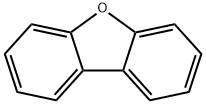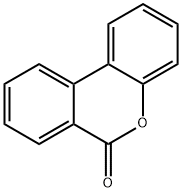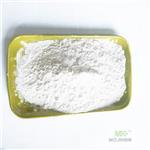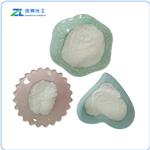
Dibenzofuran
- Product NameDibenzofuran
- CAS132-64-9
- CBNumberCB0338385
- MFC12H8O
- MW168.19
- EINECS205-071-3
- MDL NumberMFCD00004968
- MOL File132-64-9.mol
- MSDS FileSDS
Chemical Properties
| Melting point | 80-82 °C (lit.) |
| Boiling point | 154-155 °C/20 mmHg (lit.) |
| Density | 1,3 g/cm3 |
| vapor pressure | 2.48 x 10-3 mmHg at 25 °C (Chirico et al., 1990) |
| refractive index | 1.6480 |
| Flash point | 130 °C |
| storage temp. | Store below +30°C. |
| solubility | Insoluble in wate(<1 mg/mL). Soluble in nonpolar organic solvents. |
| form | Solid |
| color | White to Almost white |
| Water Solubility | <0.1 g/100 mL at 20 ºC |
| BRN | 121100 |
| Henry's Law Constant | 5.82 x 10-5 atm?m3/mol at 25 °C (approximate - calculated from water solubility and vapor pressure) |
| Dielectric constant | 3.0(100℃) |
| InChIKey | TXCDCPKCNAJMEE-UHFFFAOYSA-N |
| CAS DataBase Reference | 132-64-9(CAS DataBase Reference) |
| EWG's Food Scores | 3 |
| FDA UNII | 8U54U639VI |
Safety
| Symbol(GHS) |
    
|
|||||||||
| Signal word | Danger | |||||||||
| Hazard statements | H401-H225-H301+H311+H331-H370-H302-H411 | |||||||||
| Precautionary statements | P210-P260-P280-P301+P310-P311-P273-P391-P501 | |||||||||
| Hazard Codes | N,Xn,T,F | |||||||||
| Risk Statements | 51/53-22-39/23/24/25-23/24/25-11-20/21/22-63-43-36/37/38-45-67-40 | |||||||||
| Safety Statements | 22-24/25-61-29-45-36/37-16-7-7/9-23-53 | |||||||||
| RIDADR | UN3077 | |||||||||
| WGK Germany | 3 | |||||||||
| RTECS | HP4430000 | |||||||||
| TSCA | Yes | |||||||||
| HazardClass | 9 | |||||||||
| PackingGroup | III | |||||||||
| HS Code | 29329995 | |||||||||
| Hazardous Substances Data | 132-64-9(Hazardous Substances Data) | |||||||||
| Toxicity | Heitmuller et al. (1981) reported a NOEC of 1.0 ppm. | |||||||||
| NFPA 704: |
|



